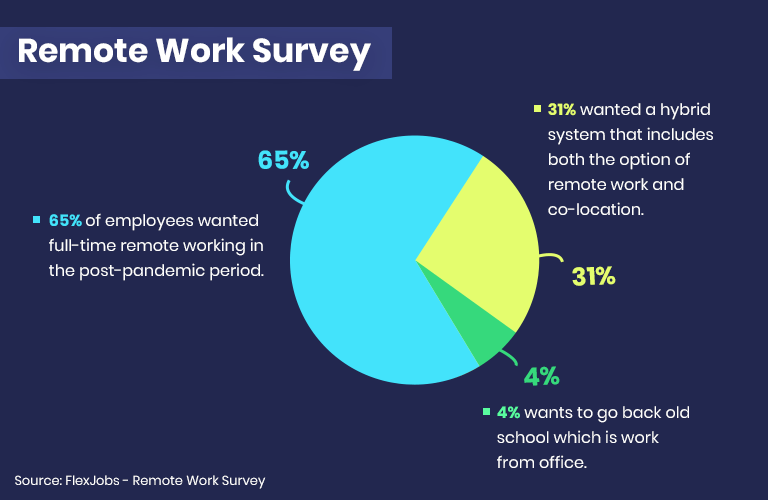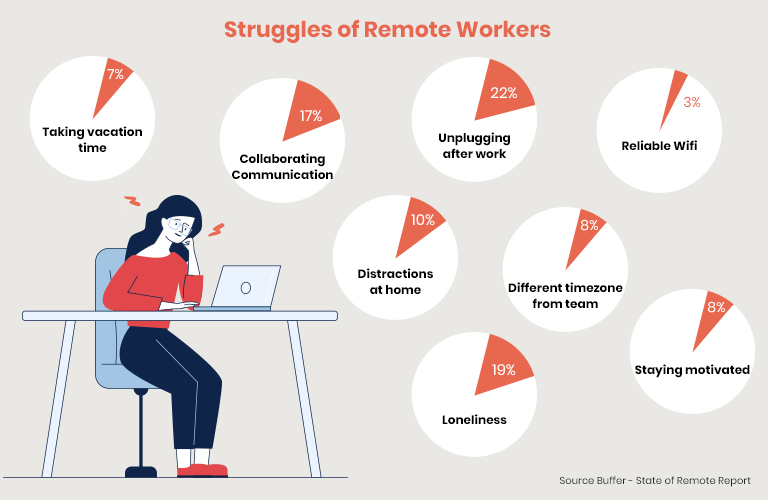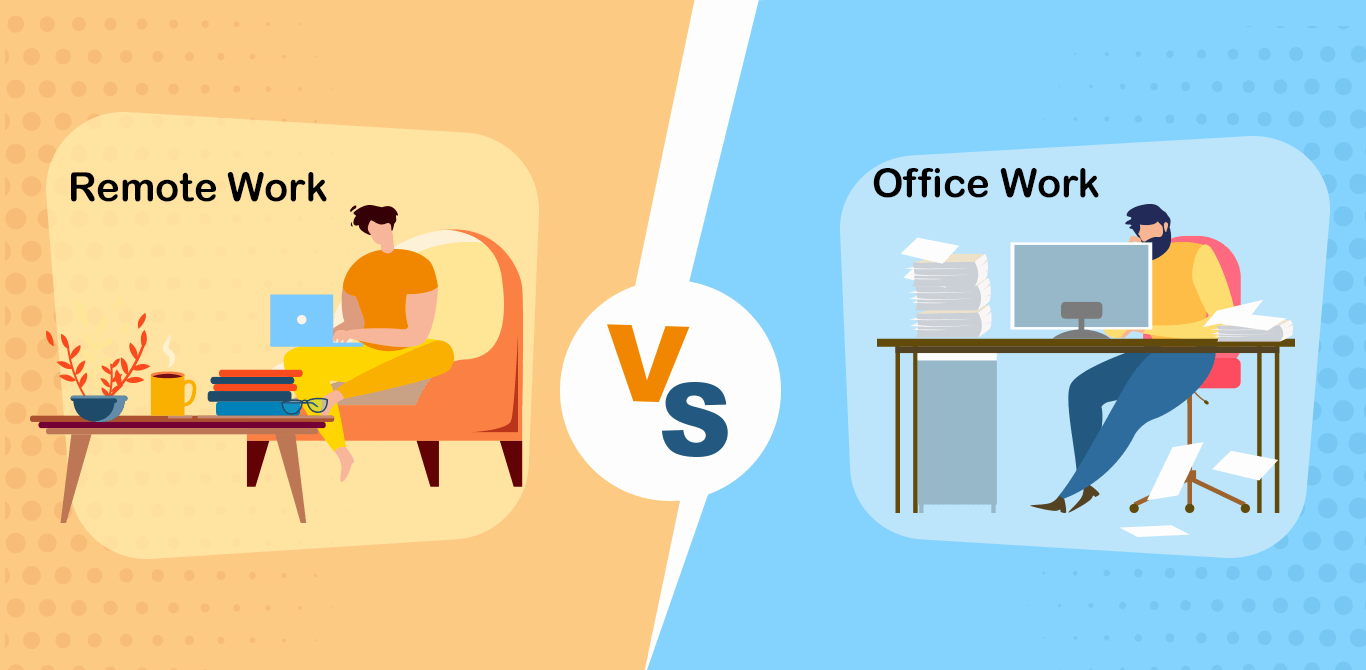Remote working has become the new normal at workplaces.
Research suggests 40% of the people seek work from the home facility for the flexibility that remote work offers.
However, there’s also the ‘demotivated lot’ who prefer working from the office than home.
Here, we have discussed the impact of workspace on employee performance. Let’s get started!
Benefits of Remote Work:

In a survey by FlexJobs, 65% of employees wanted full-time remote working in the post-pandemic period, and 31% wanted a hybrid system that includes both the option of remote work and co-location.
This signals that almost 96% of employees prefer some form of remote work.
Work from home advantages is attractive, which keeps employees opting for remote work over work from home. Let’s see what the benefits are:
- No Commuting: With zero commuting, employees can save both time and money. No more traffics, no more conveyance cost, employees are even spared from exhaustion from traveling long distances.
- Flexibility: Employees can fit in their personal appointments according to the work schedule. Managing a game with kids, medical appointments, or even an evening walk becomes easy.
- Comfort: The freedom to wear whatever you want, set up your own space makes employees love remote work. You can easily work in your own way, maybe with some music & make the environment more comfortable.
Limitations of Remote Work:

- Communication Challenges: Face-to-face communications are mostly preferred more than video calls. Especially, trainees face challenges at work due to communication issues. In 2020, 33% of businesses lost a customer due to communication issues, 30% missed important deadlines and 10% even lost jobs.
- More Distractions: Remote working comes with more distractions. Someone rang the doorbell, kids running, the food’s burning, etc., often interrupts employees’ focus. Several factors may interfere when there’s a shift of workspace. For example, being at home may distract you with so many activities going on around (especially if you have kids). Family members may work from the same space or even be unable to manage time between work and no work.
- Limits Teamwork: Team building and networking is an essential part of working from the office. Employees often get demotivated with no team to interact with.
Benefits of Work from Office:
Though remote working is comfortable and flexible, you can’t completely deny the work from office advantages.
- Better Networking Opportunities: At the office, you have the opportunity to meet people and create a good network that will support your work. Attending meetings, seminars, conferences, etc., helps you connect with more people.
- Better Communication: Working in a team at the office definitely provides better chances of communication. Moreover, your communication skills improve, and you also have the opportunity to learn from your team.
- Focused Environment: Office environments do not have the distractions that you face at home. Everyone around you works, and this makes the environment more suited for carrying out work-related activities.
- The Environment is well-regulated, focused, and full of work-related sensory and visual cues at the office. Hence, the work mindset is easy to achieve.
Limitation of Work from Office:
- Work-Life Balance Issues: Working from the office may not let you bring about a balance in your work and personal life. Regular travel and work often make it difficult to spend some quality time with friends and family.
- Monoton: The office environment often becomes static, and this monotony significantly impacts employee productivity. The same activities every day can often become stressful.
- High Exposure During the Pandemic: Office spaces are often an uncontrolled environment and lead to a faster spread of the virus due to physical proximity.
Remote Work vs. Work from Office: Impact of Workspace on Employee Performance
Considering the remote work vs. co-location aspect, several statistics show higher employee productivity levels in remote working than work from the office.
A Stanford study revealed that the productivity of call center employees increased by 13% when working from home. While 9% could work more minutes, 4% of employees could manage more calls per minute.
Companies gained a lot from remote working as employee performance improved.
For example, Cisco’s study on its employees showed a 12% increase in productivity from partial remote work.
Also, AT&T reportedly saved $150 million in the additional hours of employee productivity.
Well, then, does remote work ensure better employee performance?
Not necessarily. Though several studies in 2020 revealed better employee productivity from remote work, it has to be considered that employee productivity metrics for various organizations may be different.
There are further aspects that need to be considered, like are the results data-driven? Or if the employees were directly asked about their experience? Or, did the leaders incorporate these experiences in the decision-making?
All these important aspects of the study are vague. Hence, it cannot be said with utmost certainty that remote working does enhance employee performance.
Final Thoughts
Remote work and work from the office have their own set of benefits and limitations. Apart from the social distancing benefit, employees often enjoy the freedom and work flexibility it offers.
It is indeed an excellent motivation for those who do not like the monotony of traveling daily to their workplace.
Though studies show better employee performance from remote work, the difference in the environment of home and office cannot be ignored.
While we cannot directly point out anyone’s work mode responsible for higher employee productivity, we can say that adopting a flexible workspace is the best idea.
Whether you work from office or home, ensure setting up space where you can work comfortably without distractions. Keep a schedule, to-do lists, and don’t forget to save some time for your personal life.
Out of curiosity, What works for you? Share your experiences in the comments section below.




